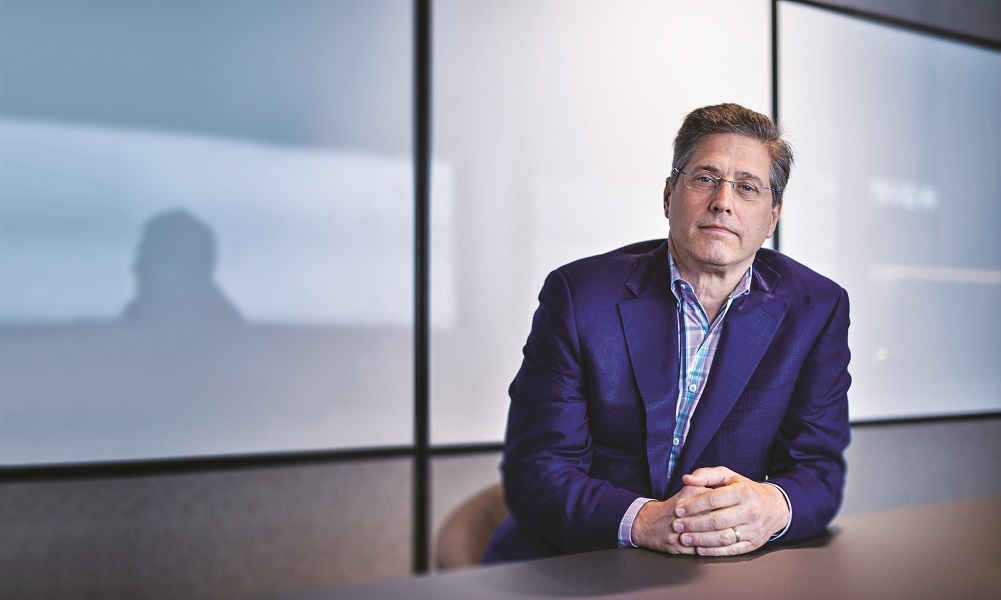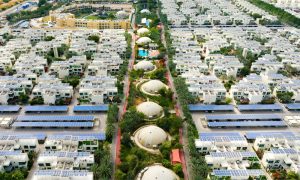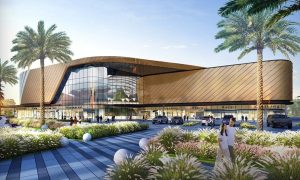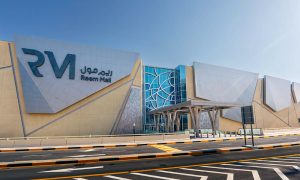Interview: How retail developers can win fight against online
Mark Grinis, EY Global Real Estate, Hospitality and Construction leader, on the Dubai’s real estate market and the challenges facing retail

Over the last few decades, Dubai has built its reputation on being a shopping paradise, offering tourists and visitors a vast range of retail options – from gigantic shopping malls all the way through to the narrow alleys of the souks along Dubai Creek. From the humble beginnings of the Dubai Shopping Festival in the 1990s to the current year-round bonanzas, the emirate has always leaned on retail to generate interest and business.
However, in recent years the retail market in Dubai has become one of the most challenged sectors, due to the growth of e-commerce and the high level of future supply. According to a JLL report, these two factors continue to exert downward pressure on rental rates across all mall types. In Q1 2019, total mall-based retail supply was approximately 3.8m sqm, while there is 666,000sqm of retail supply currently under construction and expected to be delivered by the end of 2019, including Nakheel Mall on Palm Jumeirah and the Night Souk on Deira Islands.
Retail supply is expected to increase by 53% and reach 5.8m sqm by the end of 2021, the report adds. Notable new projects will include Deira Mall, Dubai Hills Mall and Meydan One Mall. Given the scale of these projects, the report predicts that further delays and downsizing can be expected in future projects, with supply increasing faster than demand.
With retail rents declining by around 15% and 20% y-o-y in primary and secondary malls respectively, landlords are being forced to offer favourable lease terms to attract new tenants or retain existing ones. Average market-wide vacancies are estimated to have increased from 12% in Q1 2018 to 16% in Q1 2019, the report says, adding that rents and vacancies are expected to remain under pressure due to the large supply expected to enter the market over the course of this year.
Therefore, in response to softening market conditions, mall owners are now investing in new technologies to increase retail sales. One example is a partnership between Majid Al Futtaim (MAF) and I.AM+, which will see an AI platform deployed to support customers at MAF retail operations.
As other retail developers examine the viability of technology as a solution to their woes, Mark Grinis, EY Global Real Estate, Hospitality and Construction leader, tells Big Project ME that retail developers in Dubai need to challenge themselves and the way the operate a lot more than they currently are.
“If you were to reverse engineer and go back 10 to 12 years ago and say that e-commerce is coming, here is where on the e-commerce spectrum products are going to be impacted. Things that have high preferential attributes, they are the products that people will want to touch and feel. Those are the products that are going to be in malls, while the other things are going to die out.
“I think that we’re at a crossroads today. I can go on an iPad and check six different brands and the reviews on them, as well as the specs, and I can zero in on exactly what my preference is. Malls now have to compete with that, and they need to be able to understand me as a customer while being able to respond to that level of precision.”
Highlighting the traditional mall model as brand- and location-centric, Grinis casts doubt on whether that will be able to survive in the modern era, pointing out that e-commerce retailers offer a level of convenience that brick and mortar stores may never be able to match.
“We are repositioning malls and grouping things, creating communities and all that, and I understand that. But when you think about being able to try on an outfit virtually, showcase it, see what it looks like and have it in the backdrop of where I will be wearing it, and have all that in the convenience of my home, then the value proposition that malls and retailers have to address is huge.
“I believe that our industry tends to be incredibly incremental. [We think] that it worked five years ago, and that it worked pretty well then, so we can do it again. That is more of what you see over here, and I think that model is going to fail. People’s lifestyles and how they choose to spend their time is changing; whether it’s with their kids or with work, the value proposition and the emotional response of shopping has changed. Things are competing for our time, and I think that retail in the real estate space is the area that continues to be most vulnerable to that.”
However, he points out that on a wider scale, tourism across the world is one of the fastest growing industry sectors. That should continue to benefit Dubai, with more and more visitors likely to come to the city and visit its malls and other landmarks.
“From a tourism perspective, affluence around the world [is growing]. Tourism is on fire, and it’s a supply engine that I don’t see stopping. It’s going to ebb and flow, and Dubai is going to be a beneficiary of it, the whole world is going to be a beneficiary of it. 8% of Chinese have passports, wait until it hits 40%! I think the economic engine that’s happening around the world of tourism will power projects for sure.”
Furthermore, Grinis praises Dubai for what it is doing to stimulate investor interest in its economy. While he commends the recent revisions to residency laws and the opening up of new investor categories for the real estate market, he explains that these changes are just one step in the process towards diversifying the economy.
“I think that the amount of effort that is going into the visibility and branding [of Dubai] by the Chamber of Commerce has to be commended. The effort that is going into enterprise zones, tax saving zones and the changes to visas and immigration are all the right steps that need to be taken.
“The question is, how do you get blockbuster economic activity? You cannot build a society around real estate. Real estate is just a tool, it’s simply a tool of hospitality, manufacturing and innovation. But it’s just sticks and bricks. You have to have businesses climb on board, there has to be the attraction to build something, to make something,” he explains.
“How did China do what they did in 20 years? They focused on manufacturing. Obviously, Dubai will be different in how it evolves, but it’s done an amazing job. I think what they’re doing in innovation is right. It’s a global economy and everybody is competing for that same high value-add job.”
Grinis adds that he sees an environment in Dubai where a culture of innovation can flourish, with the city home to universities and institutions of higher learning, with a risk-taking culture in place and an openness to foster and drive it.
“What are the elements? Universities are an element. A high-youth population, which exists. A risk-taking culture, and an openness to foster and drive it. You go down that list, and while I wouldn’t say I’m an expert, you can check a lot of boxes here where those things are being done.
“I guess one of the challenges is that if you take a Silicon Valley that has eight universities around, or a Hewlett-Packard that started in 1955 or whatever, there’s just a [time gap], but I think innovation is changing this. It’s providing a new paradigm where someone can jump on the AI bus, for example, and become leaders in it in very short order, and leave others behind.
“So the question is, are they doing enough? For a population of three and a half million, I think a lot is being done.”
Finally, with the city pushing towards meeting its project deadlines for Expo 2020, Grinis says the impact of the event on construction and real estate will be quite significant, as it will bring a younger class of decision-makers who are hungry for more innovation and efficiency, which in turn will benefit overall performance.
“When I think about projects being planned, they take a while. I think you could say that the real estate industry in general has not been tearing it up in terms of its ability to implement change. A lot of the people in the corner offices [of real estate and construction firms] are 50-something and they still think the same. They understand the deals that they made in the 1990s and that it was amazing. They can’t forget that, and they still think it will work today. I think that has lent itself in how long it takes to build things.
“Some of the decision-makers have historically made us not a very innovative asset class. I can see decision-makers being appointed that are younger, and I’m seeing projects that are coming out of the ground [that reflect that]. I do believe that in this part of the world, in this region in particular, that there is an awareness that we need to do some things differently,” he concludes.
























